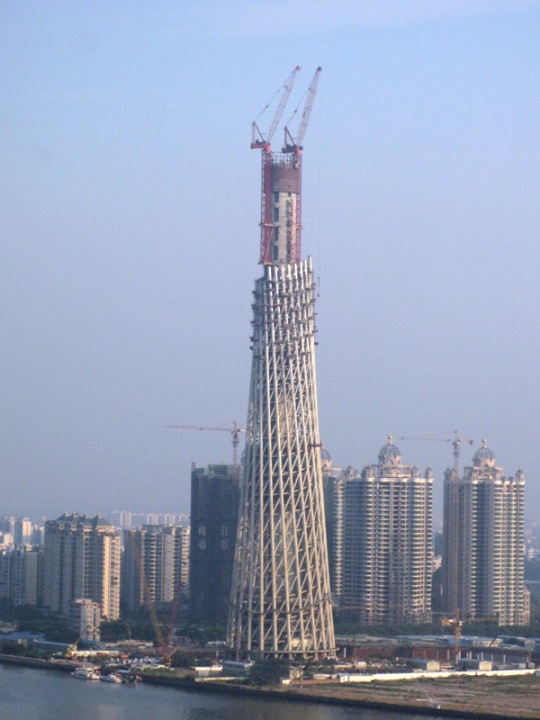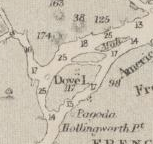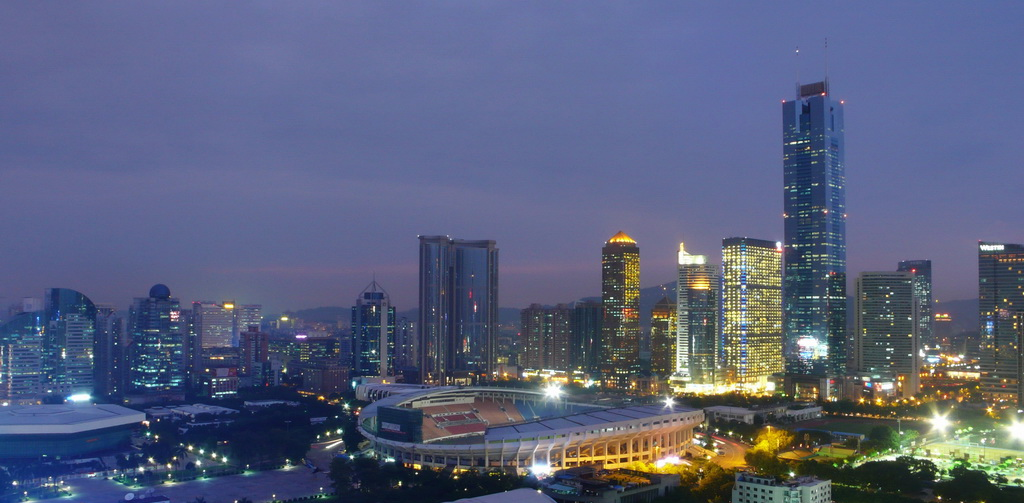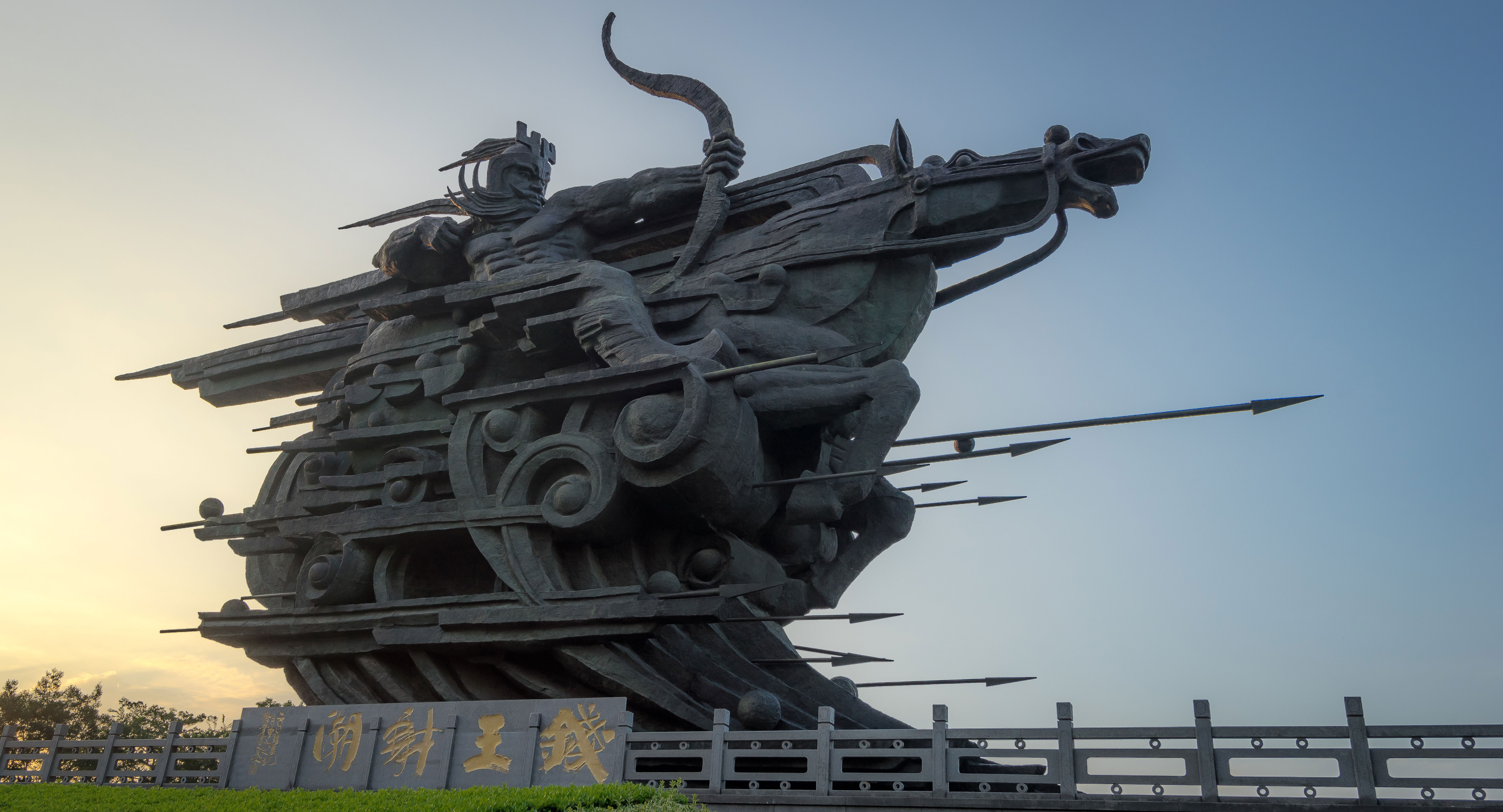|
Haizhu
Haizhu District is one of 11 urban districts of the prefecture-level city of Guangzhou, the capital of Guangdong Province, China. Geography Haizhu District is located in the southern part of Guangzhou city. After the adjustment of Guangzhou's administrative regional planning in 2005, the northern part of Haizhu District is adjacent to Liwan District, Yuexiu District and Tianhe District across the Pearl River, and the eastern, western and southern parts are adjacent to Huangpu District, Liwan District and Panyu District respectively. The main parts of the area are Haizhu Island and Henan Island. In addition, there are Guanzhou Island and Yajisha Island. Haizhu District is located between 113°14' to 113°23' east longitude and 23°3' to 23°16' north latitude, surrounded by the front and rear waterways of the Guangzhou section of the Pearl River. The area includes Haizhu Island, Henan Island, Guanzhou Island in the southeast and Yajisha Island in the south, with a total area ... [...More Info...] [...Related Items...] OR: [Wikipedia] [Google] [Baidu] |
Guangzhou
Guangzhou (, ; ; or ; ), also known as Canton () and alternatively romanized as Kwongchow or Kwangchow, is the capital and largest city of Guangdong province in southern China. Located on the Pearl River about north-northwest of Hong Kong and north of Macau, Guangzhou has a history of over 2,200 years and was a major terminus of the maritime Silk Road; it continues to serve as a major port and transportation hub as well as being one of China's three largest cities. For a long time, the only Chinese port accessible to most foreign traders, Guangzhou was captured by the British during the First Opium War. No longer enjoying a monopoly after the war, it lost trade to other ports such as Hong Kong and Shanghai, but continued to serve as a major transshipment port. Due to a high urban population and large volumes of port traffic, Guangzhou is classified as a Large-Port Megacity, the largest type of port-city in the world. Due to worldwide travel restrictions at the beginni ... [...More Info...] [...Related Items...] OR: [Wikipedia] [Google] [Baidu] |
Canton Tower
The Canton Tower (), formally Guangzhou TV Astronomical and Sightseeing Tower (), is a -tall multipurpose observation tower in the Haizhu District of Guangzhou ( alternatively romanized as ''Canton''). The tower was topped out in 2009 and it became operational on 29 September 2010 for the 2010 Asian Games. The tower briefly held the title of tallest tower in the world, replacing the CN Tower, before being surpassed by the Tokyo Skytree. It was the tallest structure in China prior to the topping out of the Shanghai Tower on 3 August 2013, and is now the second-tallest tower and the fifth-tallest freestanding structure in the world. Naming and etymology There had been a long discussion about the naming of the Canton Tower since the commencement of its construction in 2005 after the groundbreaking ceremony. In September 2020, at the request of the tower's investor, ''Guangzhou Daily'' launched a contest for naming proposals. The contest attracted over valid entries, among w ... [...More Info...] [...Related Items...] OR: [Wikipedia] [Google] [Baidu] |
Guanzhou Subdistrict
Guanzhou Island (), formerly known in English as Dove Island, is an island in Haizhu District, Guangzhou, Guangdong Province, China. It is also branded as Guangzhou International Biotech Island () since July 2011, forming the centre of Guangzhou's biotech basis. Geography and Administration Guangzhou International Biotech Island covers a total area of 1.8 square kilometers. Part of Huangpu District, it is located right between Huangpu and Haizhu District. Guangzhou International Biotech Island In 1999, Guangzhou Municipal Government announced plans to develop Guanzhou Island into Guangzhou International Biotech Island (), in order to meet the need of biological technology development. In 2000, Guanzhou Island was approved to establish an international biotechnology research and production base, and was officially named "Guangzhou International Biotech Island". Construction began in 2008. It was officially put into operation in July 2011. It is now under the jurisdiction of th ... [...More Info...] [...Related Items...] OR: [Wikipedia] [Google] [Baidu] |
Dove Island (Guangzhou)
Guanzhou Island (), formerly known in English as Dove Island, is an island in Haizhu District, Guangzhou, Guangdong Province, China. It is also branded as Guangzhou International Biotech Island () since July 2011, forming the centre of Guangzhou's biotech basis. Geography and Administration Guangzhou International Biotech Island covers a total area of 1.8 square kilometers. Part of Huangpu District, it is located right between Huangpu and Haizhu District. Guangzhou International Biotech Island In 1999, Guangzhou Municipal Government announced plans to develop Guanzhou Island into Guangzhou International Biotech Island (), in order to meet the need of biological technology development. In 2000, Guanzhou Island was approved to establish an international biotechnology research and production base, and was officially named "Guangzhou International Biotech Island". Construction began in 2008. It was officially put into operation in July 2011. It is now under the jurisdiction of ... [...More Info...] [...Related Items...] OR: [Wikipedia] [Google] [Baidu] |
Yuexiu District
Yuexiu District is one of 11 urban districts of the prefecture-level city of Guangzhou, the capital of Guangdong Province, China, located west of the Tianhe District and east of the Liwan District. It is the commercial, political and cultural centre of Guangdong and noted for its high-quality education. The Guangdong provincial government and the Guangzhou city government are both located in the Yuexiu District. Established in 1960, the district absorbed the former Dongshan District in May 2005 along with several former subdistricts of the Baiyun and Tianhe district. Yuexiu District has 18 streets under its jurisdiction. The total area is 33.8 square kilometers. According to the seventh census data, as of 0:00 on November 1, 2020, the resident population of Yuexiu District was 1,038,643. History Yuexiu is the historic center of the capital of the Nanyue Kingdom. Little was known of yuexiu district before Qin dynasty ( 秦代 ).However, according to archaeological discoverie ... [...More Info...] [...Related Items...] OR: [Wikipedia] [Google] [Baidu] |
Hoi Tong Monastery
The Hoi Tong Monastery, also known by many other names, is a Buddhist temple and monastery on Henan Island in Guangzhou, China. It shares its grounds with the city's . Names The official English form of the name is "Hoi Tong Monastery", a transcription of the Cantonese pronunciation of the Chinese translation of the Indian Buddhist monk Sāgaradhvaja ( sa, सागरध्वज, "Ocean Banner" or "Flagpole"), who appears in the Flower Garland Sutra as a devout student of the Heart Sutra. Variants include ; the translations or Monastery, , and or ;. the Mandarin Hae Chwang,. Haichuang, and ; and the misreadings "Hoy Hong Temple" and "Haizhuang Temple".. From its location, it has also been known as the Temple of Honan or Honam. History The monastery was first established as the Qianqiu Temple under the Southern Han, a 10th-century Tang successor state whose capital was at Xingwang (now Guangzhou). The walled city lay north of the Pearl River, while Henan Island ... [...More Info...] [...Related Items...] OR: [Wikipedia] [Google] [Baidu] |
Panyu District
Panyu, alternately romanized as Punyu, is one of 11 urban districts of the prefecture-level city of Guangzhou, the capital of Guangdong Province, China. It was a separate county-level city before its incorporation into modern Guangzhou in 2000. The present district covers an area of about . Geography Panyu lies at the heart of the Pearl River Delta, its boundary straddles from latitudes 22.26' to 23.05', and sprawls from longitudes 113.14' to 113.42'. Facing the Lion Sea in the east and the estuary of the Pearl River in the south, its eastern border is separated from Dongguan by a strip of water, and the western border of Panyu is adjacent to the cities of Nanhai, Shunde and Zhongshan, while it abuts the downtown of Guangzhou in the north. The site of the People's government of Panyu is Shiqiao which is from downtown Guangzhou and from the cities of Hong Kong and Macau, respectively. Shiqiao may have once been called "Stone Bridge town", but because of war, the characters ... [...More Info...] [...Related Items...] OR: [Wikipedia] [Google] [Baidu] |
Huangpu District, Guangzhou
, alternately romanized as Whampoa, is one of 11 urban districts of the prefecture-level city of Guangzhou, the capital of Guangdong Province, China. Despite its name, it does not include Huangpu Island (now Pazhou) or its famous anchorage. Huangpu absorbed Guangzhou's former Luogang District in 2014. The district has been awarded the status of "Happiest District of China" in 2020. History During the Canton trade, Changzhou was known as "Dane's Island" and used by Danish crews for repairs and burials. It lay on the eastern side of the Huangpu or "Whampoa" anchorage, named for Huangpu Island (now Pazhou in Haizhu District). The Whampoa Military Academy was founded on Changzhou in 1924. Huangpu district played an important role in China's economic development. Originally called "Guangzhou Development District", it was one of the first economic and technological development districts in China. On 12 February 2014, Luogang District was dissolved by China's central gove ... [...More Info...] [...Related Items...] OR: [Wikipedia] [Google] [Baidu] |
Tianhe District
Tianhe District () is one of the eleven districts of Guangzhou, the capital of Guangdong province. In Chinese, the name Tianhe literally means "a river in the sky/heavens", which is also a Chinese name for the Milky Way. It is bordered by Yuexiu District on the west, Baiyun District on the north and Huangpu District on the east. Haizhu District is on its south, though they are separated by the Pearl River. Tianhe became a district in the 1980s as the city expanded its size. Back then, it was east of Dongshan District (which was merged into Yuexiu in 2005) and retained a suburban or even rural atmosphere. A majority of colleges and universities in the city were located in the district. However, Tianhe District has seen a sharp decline in arable land at an average rate of 1,000 mu per year due to urbanization since 1991. Tianhe has since developed into one of the most desirable areas in Guangzhou. Symbolic landmarks of Guangzhou located in Tianhe District are: Citic Plaza, Gua ... [...More Info...] [...Related Items...] OR: [Wikipedia] [Google] [Baidu] |
Pearl River
The Pearl River, also known by its Chinese name Zhujiang or Zhu Jiang in Mandarin pinyin or Chu Kiang and formerly often known as the , is an extensive river system in southern China. The name "Pearl River" is also often used as a catch-all for the watersheds of the Xi ("West"), Bei ("North"), and Dong ("East") rivers of Guangdong. These rivers are all considered tributaries of the Pearl River because they share a common delta, the Pearl River Delta. Measured from the farthest reaches of the Xi River, the Pearl River system is China's third-longest river, after the Yangtze River and the Yellow River, and second largest by volume, after the Yangtze. The Pearl River Basin () drains the majority of Liangguang (Guangdong and Guangxi provinces), as well as parts of Yunnan, Guizhou, Hunan and Jiangxi in China; it also drains northern parts of Vietnam's Northeast Cao Bằng and Lạng Sơn provinces. As well as referring to the system as a whole, the Pearl River (Zhu Jiang) nam ... [...More Info...] [...Related Items...] OR: [Wikipedia] [Google] [Baidu] |
Zhujiang
The Pearl River, also known by its Chinese language, Chinese name Zhujiang or Zhu Jiang in Mandarin Chinese, Mandarin pinyin or Chu Kiang and formerly often known as the , is an extensive river system in South Central China, southern China. The name "Pearl River" is also often used as a catch-all for the watersheds of the Xi River, Xi ("West"), Bei River, Bei ("North"), and Dong River (China), Dong ("East") rivers of Guangdong. These rivers are all considered tributaries of the Pearl River because they share a common River delta, delta, the Pearl River Delta. Measured from the farthest reaches of the Xi River, the Pearl River system is China's third-longest river, after the Yangtze River and the Yellow River, and second largest by volume, after the Yangtze. The Pearl River Basin () drains the majority of Liangguang (Guangdong and Guangxi provinces), as well as parts of Yunnan, Guizhou, Hunan and Jiangxi in China; it also drains northern parts of Vietnam's Dong Bac, Northeast ... [...More Info...] [...Related Items...] OR: [Wikipedia] [Google] [Baidu] |
Binjiang Subdistrict, Guangzhou
() is one of ten urban districts of the prefecture-level city of Hangzhou, the capital of Zhejiang Province, in East China, it is located in the core urban area of Hangzou. It is across the Qiantang River from West Lake and the older parts of Hangzhou. Like Pudong in Shanghai, it a very modern, and rapidly developing, area that was mostly farmland until ten years ago. The district's total area is , and its population totals 455,000 people. The district people's government is situated on Xixing Road. History The district was established on December 12, 1996. In August 2015, Binjiang District was approved as China's tenth . Geography Binjiang District is bordered by Xiaoshan District to its east and south, and by the Qiantang River to its north and west. Across the Qiantang River lies Jianggan District, Shangcheng District, and Xihu District. Administrative divisions Binjiang District has jurisdiction over three subdistricts: , , and . These subdistricts are then further d ... [...More Info...] [...Related Items...] OR: [Wikipedia] [Google] [Baidu] |







